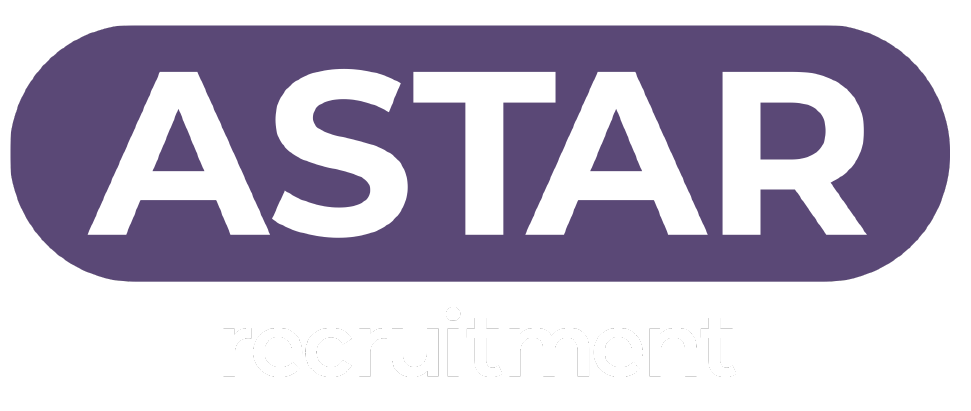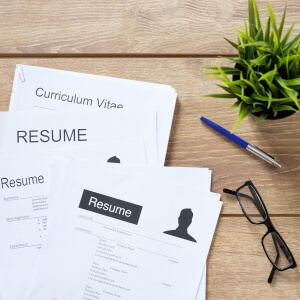Connecting people and work
Resume CV Tips
Professional Resume CVs
Our recruitment professionals see many resumés and we want to ensure your resume sets you up for successful job placement.
Get your resume CV ready with these tips...
Tips on Writing a Resume
Showcase your skills and experience
Our recruitment professionals at ASTAR Recruitment see many resumés daily and we want to make the process easier for you by providing you with a range of free resumé and cover letter templates. Consider these templates as groundwork to showcase your skills and experience.
Getting noticed and shortlisted for that dream job is not as easy as you may think. However, having a polished and professional resumé makes all the difference. Below are ASTAR Recruitment’s handy tips to achieving the important details of resume writing, making you transform your resume to one that stands out from the crowd.
Formatting
Keep it Simple
The most important thing on the resume is the content so keep it simple.
- Use a font that is easy to read and make sure that your font style stays consistent throughout the body of the resume.
- Avoid using colourful text.
- When using dot points, stick to one style
- Always send your resume in Microsoft Word, not as a PDF as some software may not be able to open it.
Contact Details
What to include and what to keep out
It is advised that you do not provide details such as your age, marital status, religion, ethnic background or any health issues you may have on your resume. We also recommend that you leave out your date of birth.
In saying that however, if any of these factors are relevant to the position you are applying for, mention that information in your cover letter. You should include:
- Name
- Address
- Contact Number – for mobile numbers, ensure that you have a professional sounding voicemail message.
- Email Address – avoid using a casual-sounding email address.
- (If Relevant) Your LinkedIn account name – a hyperlink is ideal.
- Ensure that the above details are correct and attempt to put them on each page in case the pages get separated after printing.
Opening Statement
An opening statement will set you apart from the rest and can be tailored to each job application.
Your opening statement is a quick overview of your key strengths and can always be written in bullet points to highlight your main skills, talents and selling points.
Career Overview
Snapshot of your experience and training.
If you decide to use a career overview in your resume this should go in the ‘Opening Statement’ section.
Make sure that your opening sentence grabs the reader’s attention and makes them want to find out more about you. This should only be a few sentences long, no longer than a paragraph and include information about your professional, academic and industry training.
Employment History
Your most recent place of employment should be the first job listed in this section and then work backwards from there. This section is more easily read in dot points.
- Outline your career history
- List your job title
- Employer name
- Date of employment
- Responsibilities and Skills required
Note that in this section it is not necessary to list everything that you do in this position. For example, ‘attending monthly meetings’ is not a responsibility, whereas ‘chairing a meeting’ is. Only include tasks that you were responsible for in this role. - Highlight your achievements
Here include the achievements that you do not get paid for. These do not include, ‘reaching the monthly sales target’ as that is a requirement of your position. Whereas ‘exceeding monthly sales target’ is an achievement above and beyond your job description. - Choose key responsibilities and tailor them to the relevant job you are applying for
Here you may include: staff awards, special commendations or implementing an idea that resulted in an increase in revenue. - Use passive verbs such as ‘managed’, ‘achieved’ and ‘delivered’.
Education and Training
List of all your education and training.
- Begin with your highest level of educational attainment.
- Unless you have just left school, you can leave your high school education out.
Career Gaps
Been out of the workforce?
If you have been out of the workforce for a while, try and explain the reason for this gap in your resume. Write a short paragraph explaining why there was a gap and position the explanation where it corresponds in your resume’s ‘Employment History’ section.
It is worthwhile to include information regarding new skills or training you may have acquired during this time.
References/ Referees
Well done you’ve been shortlist
Always get consent from your referee’s before listing them on your resume. Your referees would generally only be contacted if your application progresses and you are placed on a shortlist.
If you prefer, you can leave this section blank on your resume and state, ‘Reference available upon request’.
Alternatively, if you are asked to include references on your resume or application, include former managers or people in position of responsibility. Provide their:
- Name
- Job title
- Email addresses
- Phone numbers
Extra Bits
Stand out from the rest
Extra information can be included in your resume if they help reinforce your application. These are not necessary, but if applicable they may be useful to demonstrate your suitability to the role advertised. These include:
- Affiliations and Memberships with Professional Entities
- Licences and Accreditations
- Ability to speak a foreign language.
- Publications
- Interests
Resume Templates
Writing a resume from scratch can be quite daunting so ASTAR Recruitment wanted to help you.
Use the tips from the resume writing tips section and apply them to the free template below to write your best resume and stand out from the crowd.
Resume Don’ts
What to leave out
At ASTAR Recruitment, we believe that it is just as important what you decide to leave out of your resume, as what you decide put in. Below is a list of things that should never be included in your resume.
A bad photo is never good
Adding a photo of yourself on your resume is entirely your choice, however when you decide which photo to add make sure it is good.
- High resolution
- Professional looking and current
- Presentable
- This photo can be used on your LinkedIn profile as well
Never include a grainy image from your last holiday or from a night out. It will not leave a great impression on your prospective employer.
A current work number or email address
If you are sending out your resume to potential employers, ensure that you create a professional sounding email address.
Do not list your current company email address or your office number as it may create issues if anyone in your current workplace grasps that you are applying for a different job.
Never be negative
Your resume is a marketing document that demonstrates your skills in a positive way. That means, that you must stay positive.
Never mention anything in your resume that is unpleasant. Even if you had a difficult manager, you should never write their name down on your resume. In saying that, if you get further along the interview process and are shortlisted for the position, you can briefly explain to the interviewer why you will not be providing a reference for your last manager.
Leave out the unnecessary details
Irrelevant job experiences can be left out of your resume as it may distract from your more relevant recent employment history.
Your resume should market yourself and your experiences based on the job that you are applying for.
Attempt to be clear, concise and current.
Career objectives
Your career objective is generally indicated by the fact that you applied for the job, so it is unnecessary to include it in your resume.
In saying that however, you may wish to add a brief personal statement for the reader to give them a better idea of your interests, passions and goals for the future.

